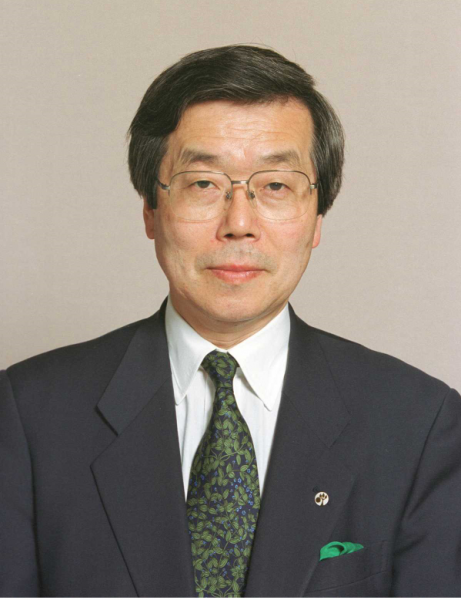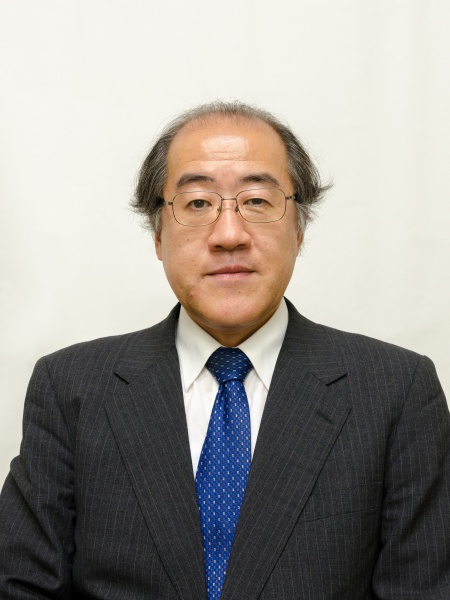Financial and Fiscal Policies Successfully Adopted— The government needs to continue to strive to achieve inflation through growth strategies without fearing the costs.
< Key Points >
- – The adoption of bold financial policies has resulted in a steady rise in the inflation rate.
- – The short-term fiscal stimulus and the medium-term fiscal reconstruction have been progressing.
- – The implementation of growth strategies clearly appears to be slow.

TO Takatoshi, Professor, University of
Tokyo
Abenomics, the economic policies advocated by the administration of Prime Minister Abe Shinzo, began on November 14, 2012, when then Prime Minster Noda Yoshihiko stated that the House of Representatives would soon be dissolved. During the campaign for the election of new members of the House of Representatives, Mr. Abe positioned ending the deflationary economy as the key to the reconstruction of the Japanese economy, and strongly requested that the Bank of Japan change its policies by setting an inflation target and launching unprecedented aggressive monetary easing (the “first arrow”).
The introduction of monetary easing and a rise in the expected inflation rate were expected to result in higher exports on the back of the weak yen, and the revitalization of the capital market due to a shift from private assets to risk assets and increased capital spending. Along with adopting monetary easing, Abenomics also aims to definitively end Japan’s deflationary economy by increasing fiscal spending (the “second arrow”).
These policies were adopted based on the judgment that to finally break away from the deflation equilibrium that had been continuing for as long as 15 years, since 1998, would require introducing strong policies. These policies aim to end the deflationary economy by stimulating overall demand (in addition to private demand) through public spending, raising the expected inflation rate, and improving the supply/demand gap. These two arrows are the stimulus packages advocated by new Keynesians who focus on the concept of expectations.
In addition, Abenomics advocates growth strategies (the “third arrow”) based on the judgment that to maintain economic growth amid the decline in the size of the labor force (which has become increasingly apparent) due to the falling birth rate and the aging population, it is necessary to promote deregulation in various sectors to enhance per capita productivity and increase the rate at which women and the elderly participate in the labor market.
The concept of the various equilibriums found in economics will help us to more easily understand these three arrows in a consistent manner. One type of equilibrium is a deflationary equilibrium, where deflation creates the expectation of deflation and the expectation of deflation leads spending to be postponed, which in turn lowers investment returns. Another type is a normal equilibrium, in which potential spending and investments are realized below a 2% expected inflation rate. Abenomics aims to jump from a deflationary equilibrium to a normal equilibrium. This report will review the trajectory of Abenomics over the last year, and point out the challenges in the coming year.
*** *** *** *** ***
As for the first arrow—aggressive monetary easing and setting an inflation target—the market, which had hoped that these policies would be introduced, reacted before specific measures were realized. The weaker yen and rising stock prices started on November 14, 2013, when the dissolution of the House of Representatives was indicated. Until the day before April 4, 2013, when the Governor of the Bank of Japan, Kuroda Haruhiko, announced the introduction of quantitative and qualitative monetary easing (QQE), the yen rate against the US dollar had declined approximately 20%, from \78 to \93, and the Nikkei Stock Average had climbed approximately 38%, from \9,000 to \12,400.
After the announcement of QQE, the yen depreciated further, to \103, and stock prices increased, close to \16,000. However, since Ben Bernanke, former chairman of the Board of Governors of the United States Federal Reserve (FRB), heralded the beginning of the end for quantitative easing on May 25, 2013, the dollar/yen exchange rate has been trading at around \100, and the Nikkei Average has been fluctuating between \14,000 and \15,000. The weaker yen and higher stock prices have prompted spending through the wealth effect and significantly improved the performance of export-oriented companies. Although this has not yet actually resulted in increases in capital spending or in export volume, the inflation rate has been steadily rising and become positive. The first arrow has indeed hit the target at which it was aimed.
Flexible fiscal policies carried the messages of a short-term fiscal stimulus package and medium-term fiscal reconstruction. The short-term fiscal stimulus package was the \13 trillion fiscal supplementary budget announced in February 2013. Based on this stimulus package, a significant amount of fiscal spending was added for the first half of 2013 and allocated to public spending and reconstruction projects. As a result, through the effects of monetary easing, the economy was successfully boosted and grew at an annualized rate of 4% in the first half of 2013.
In July and August 2013, there was a debate over whether the consumption tax would be raised to 8% in April 2014 as planned or whether the increase would be suspended or postponed in light of its impact on the economy. Prime Minister Abe decided on October 1 that the consumption tax would be raised as planned as long as adequate fiscal measures were taken so the economic recovery didn’t stall. With these developments, the second arrow is also believed to have been released successfully, as it has achieved its short-term goal—economic stimulation—as originally planned, and the consequent economic improvement has paved the way for a medium-term fiscal reconstruction.
*** *** *** *** ***
The details of the third arrow, the Japan Revitalization Strategy (“JAPAN Is BACK”), were determined at the Cabinet meeting on June 14. However, the market did not react to this growth strategy that enthusiastically. This is largely due to the fact that the strategy only presented a random list of measures, which appeared to have been provided by the ministries in charge, without any indication of their order of priority. Although each measure had its own progress schedule, the order of priority of the measures was still not clearly indicated. Nor were the methods to ensure the implementation of these measures robust enough to satisfy market participants. Therefore, unlike the first and second arrows, there is a strong sense that the third arrow, the growth strategy, has not yet been released.
Those industries that have room to improve their productivity are the ones with the potential to improve their productivity, although this has been hampered by regulations.
Let’s look at one example. Prime Minister Abe has repeatedly stressed his intention to build a strong agricultural industry. Up till now, many people had believed that agriculture was a weak industry that needed to be protected by high tariffs. In fact, the existing agricultural policy had adopted the idea of a planned economy, in which, if demand declines due to the changing tastes of consumers or a decline in the younger population, supply will be reduced accordingly. This idea has actually resulted in a uniform reduction of rice acreage and planned cutbacks in milk production nationwide. Consequently, production restrictions have even been applied to the most productive and extensive farming operations. This idea is the complete opposite of improving productivity.
There have been no efforts to expand the scale of production or to promote exports, even for products such as brand rice and premium milk that only have export potential if their productivity is improved. A strong agricultural industry means the system must be changed from protectionism to the promotion of exports by expanding its scale and cutting costs. Japan, specifically Hokkaido, has existing brands whose quality and safety has been established in many countries in Asia. There is no reason why Japan shouldn’t take advantage of this.
One important development that will promote the policies of the third arrow is the political decision to terminate the rice acreage reduction policy. However, the third arrow will lose its momentum unless a number of the measures presented in the Japan Revitalization Strategy are steadily carried out one by one.
*** *** *** *** ***
The challenges of Abenomics in 2014 are, first of all, to continue those monetary and fiscal policies that have proven to be successful. If the inflation rate, which is expected to continue to rise and to stabilize at 2%, underperforms the expectations of the Bank of Japan, the Bank will be required to introduce additional monetary easing. Meanwhile, due to the consumption tax hike in April, it is believed that demand for durable goods will be strong in the January–March period due to a last-minute buying spree, while demand in the April–June period will fall in reaction to the strong demand in the previous period. To alleviate the amount of fluctuation in this mini economic cycle, it would be a good idea for the government to draw up a budget in a way that shifts public spending and other official spending from the January–March period to the April–June period.
In the spring wage negotiations, the debate over the first raise in basic wages in several years will be the focus of attention. It is necessary to ensure that, as deflation ends and the inflation rate hits 2%, the rate of wage increases keeps up with the rise in the inflation rate. In the past, when the government adopted a policy of guiding the economy from a high inflationary environment to a low inflationary environment, it introduced an income policy that persuaded labor unions to constrain wages while lower inflation rates were achieved at the same time. The policy the government will adopt this time to promote an increase in wages could be called a reverse income policy.
Lastly, more than anything, the paramount challenge in 2014 is to implement growth strategies through deregulation, selection, and concentration, and increase productivity by pursuing efficiency. Simple growth strategies consisting of providing subsidies for a long time, which may involve the risk of arbitrary allocation, are not desirable. By taking advantage of the nature of its being a stable longtime administration, the current government should enact bold growth policies, aiming to achieve its medium-term goals, even though they may incur short-term pain, by providing a safety net (alleviating pain by providing lump-sum payments).
Translated from “Abenomics no Ichinen [part 1]: Kinyu, Zaisei seisaku wa Seiko (Financial and Fiscal Policies Successfully Adopted),”Nihon Keizai Shimbun, p. 17 December 2, 2013 (Courtesy of Nihon Keizai Shimbunsha) [2013]





